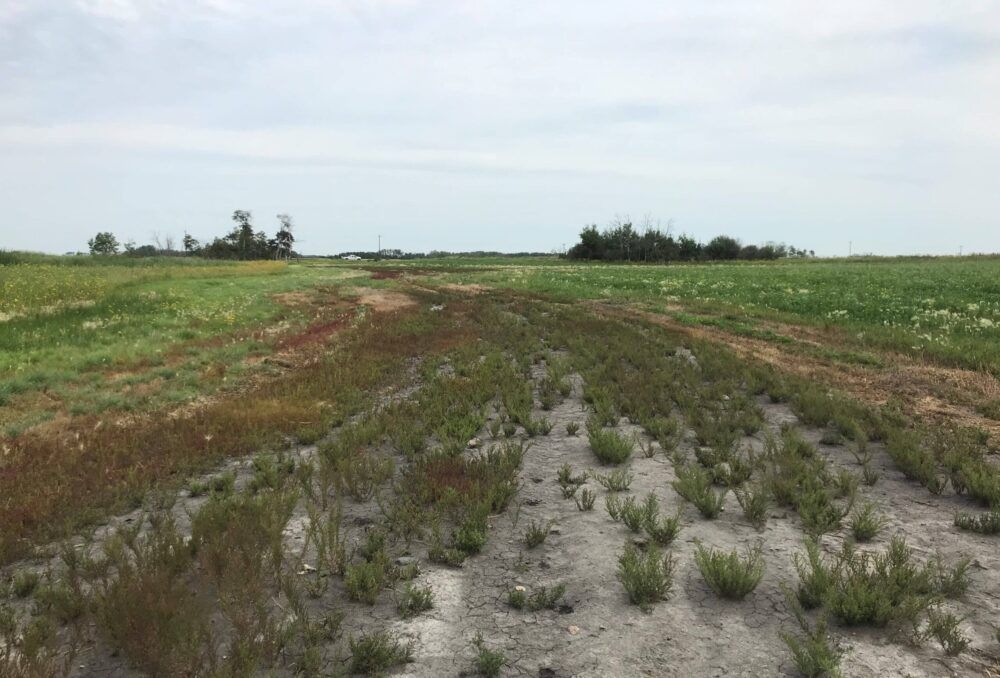March 30, 2025
Marginal Cropland Potential: The Prairie Precision Sustainability Network
The Prairie Precision Sustainability Network (PPSN) is rethinking how we manage marginal croplands in the Canadian Prairies. It began in 2022 with researchers from USask and UCalgary collaborating to identify underperforming areas of cropland using precision yield data and satellite imagery. By 2023, the team secured funding to expand their work to Manitoba, and in 2024, PPSN received a major $3.9M grant, bringing in researchers from UManitoba, UWaterloo, and USask. This paved the way for their next big step: converting problematic croplands into productive and sustainable areas.
Why Focus on Marginal Lands?
The Prairies have millions of acres of cropland facing challenges—such as saline soils that drastically cut yields or areas prone to erosion. PPSN aims to restore these lands, not only to boost productivity but to benefit the environment. Restoration directly contributes to healthier soils, cleaner water, greater biodiversity, and a measurable reduction in greenhouse gas emissions.
PPSN’s Approach: From Data to Solutions
In Phase 1, PPSN used precision yield data from Saskatchewan and Alberta to create a satellite-based model for predicting crop yields and pinpointing unprofitable areas within fields. This set the foundation for targeted interventions and expanded research into Manitoba.
Phase 2 focuses on converting marginal lands into perennial forage. By collaborating with producers, PPSN identifies struggling areas—often saline or waterlogged—and restores them using diverse perennial mixes. These converted areas provide both ecological benefits and additional revenue opportunities through forage production.
The Case for Restoration
Marginal lands in the Prairie region pose challenges but also offer opportunities. Studies have highlighted over 11 million acres of saline lands that hinder production. PPSN’s restoration efforts address these challenges directly. Restoring marginal lands offers benefits including:
- Environmental: Boost biodiversity, improve water quality, enrich soils, and enhance ecosystem services.
- Climate: Capture carbon in roots and soils while cutting greenhouse gas emissions.
- Economic: Stabilize yields, reduce input costs, and create new revenue streams.
Farmers at the Heart of Change
PPSN’s success relies on its close collaboration with producers. Through field-scale studies in the Prairie Pothole Region, farmers work with the team to map out low-yielding areas for forage conversion. Typically, 10–25% of a field’s crop area—spots prone to salinity or water issues—is seeded with perennial mixes. In return, farmers receive incentives like payments for converted acres, reimbursed seed costs, and access to programs like MAP, MARS, and S-CAP/RALP. The restored areas not only improve soil and ecosystem health but also provide a new source of income through haying forage.
Moving Toward Sustainable Agriculture
PPSN is challenging the old idea that environmental health and farming profitability must compete. By restoring marginal lands, farmers can stabilize yields, reduce input costs, and enhance resilience—all while contributing to a healthier environment.
PPSN isn’t just about research—it’s about creating practical solutions. By collaborating with producers and fostering innovative practices, the Prairie Precision Sustainability Network is building a resilient, sustainable future for agriculture in Canada.

